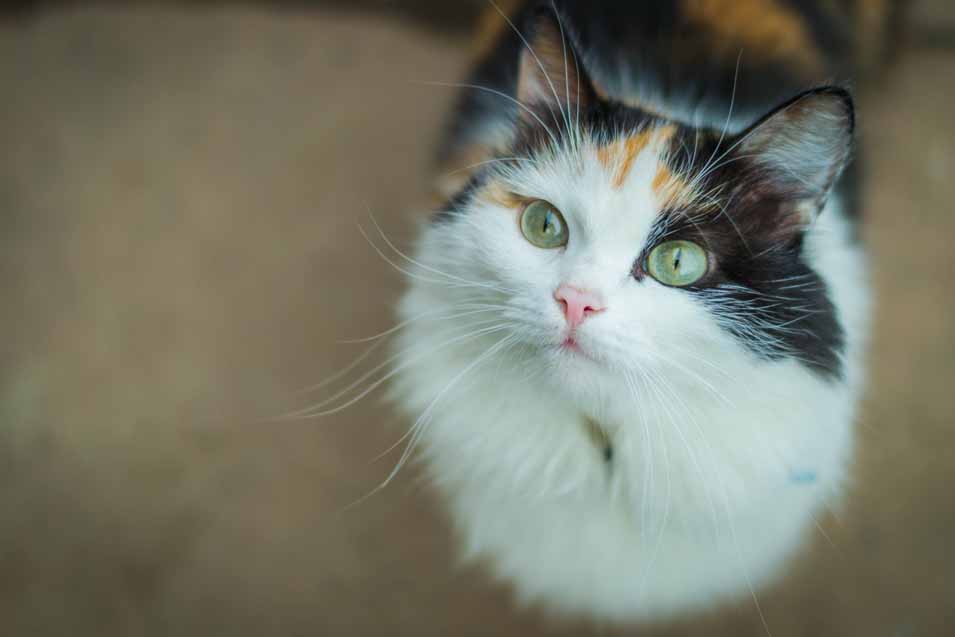Both glucosamine and chondroitin have been used to treat (and alleviate the symptoms of) osteoarthritis in Europe for several decades. Recently, veterinarians and physicians in North America have started to prescribe this product to their patients, too, and the results are excellent.
If you own an older cat or your feline companion is suffering from arthritis, you might have heard various things glucosamine. But is it safe and does it really provide that many benefits? In this article, we’ll look at what glucosamine is, what it does, and whether or not it has any side effects.
What Is Glucosamine and What Does It Do?
Glucosamine is an amino sugar compound that can be found naturally in the body. It can be extracted from a wide array of types of bone cartilage, and one of the most effective types is found in the shells of crustaceans. Since these are usually discarded, they are a cost-effective and reliable source of glucosamine.
What does it do? The short answer to this question is that it helps build or maintain the patient’s joints. Cartilage can become less flexible as our pets age, and can even break down. Glucosamine slows down this process, along with chondroitin, type II collagen, and several other substances currently available. In a nutshell, glucosamine prevents joint deterioration and allows your cat to move in an easier and more flexible manner.
Much like their canine counterparts, cats can develop hip dysplasia. This condition fastens the physiological wear on the cartilage that protects the bony surface of the joint. When the bone gets in contact with the other bone, the pain becomes noticeable. Both glucosamine and chondroitin are often used as an aid in the treatment of hip dysplasia, arthritis, and even spinal disc injuries or post-operatively in pets that have undergone any kind of joint surgery.
Glucosamine and Cat Arthritis
Arthritis happens when the cartilage between any two bones starts to erode, which in turn forces the bone to become thicker. This occurrence leads to swelling, pain, and inflammation, at which point the cats start to show symptoms. Older cats, just like older dogs and older humans, are more prone to arthritis because their cartilage is more fragile.
If your cat has experienced an injury or a bone infection in the past, he or she might be more prone to developing arthritis in that particular area. While it might be more or less difficult to tell whether your cat has arthritis given that many domesticated felines aren’t known for their love to exercise, some of the symptoms that you will notice are discomfort, a reluctance to walk or move, and the favoring of one side of the body.
Glucosamine is a supplement that is capable of building new cartilage. Moreover, it blocks the enzymes that will try to damage the joint tissue. Despite being a nutraceutical, it has significant anti-inflammatory effects, which is why the pain experienced by the cat will be less intense and possibly even disappear.
Side Effects
This is the part of the article you’re most interested in if you want to make sure that your cat gets to lead a happy and healthy life. As with any other types of medications, glucosamine has several side effects, but fortunately, they are not as severe as those of pharmaceutical drugs.
This natural treatment is mostly safe, but it has several adverse effects that usually involve the digestive system of the animal. What that means is that your cat might experience issues like vomiting or diarrhea, but these typically occur when the dosage is not correct.
Our advice to you would be to perform a little test and give your cat only a small amount of glucosamine before starting the treatment. You can gauge the effects as they will likely show up over the course of 5 to 6 hours after the medication has been administered. It goes without saying that you should consult the vet before you start the treatment, even if it is completely natural and the percentage of cases where adverse effects are noticeable is low.
Dosage
The dosage depends on the type of pet you have. If you have a dog, too, you might want to know that dogs under the weight of 25 pounds should get 500 mg per day, dogs within the range of 25 to 50 pounds should receive 1000 mg of glucosamine daily, and those that weigh more than 50 pounds should get 1500 mg every day.
With cats, most product manufacturers and the specialized literature recommend 250 mg per day. One mention that we must make is that, when you start treating your cat with a joint health product that contains glucosamine, chondroitin, and collagen, you need to continue it for the remainder of your pet’s life. If you stop, the degeneration of the joint cartilage will come back.
Usually, glucosamine (along with the other two) is administered for a period of eight weeks, where the cat takes the maximum dosage recommended for his or her weight. Naturally, that 250 mg dosage we mentioned earlier needs to be customized as per the size of your feline companion as there are cats that weigh 6 pounds, but others can even weigh 22. Following the 8-week time span, the dose is usually reduced but not significantly with animals that suffer from arthritis.
Another situation where you might have to give glucosamine and chondroitin to your young pet would be when he or she has undergone joint surgery. The veterinarian might recommend you a formula that needs to be used for a period of three months following the surgery. If the health of your pet is perfect at the end of that time span, you can stop the treatment — but this works only with young animals that have no type of arthritis.
Form
There are many ways you can give glucosamine to your cat, and two of the common dosage forms currently available are capsules and liquid solutions. Capsules are more or less easier to work with if your cat isn’t extremely picky about his or her food, as all you need to do is sprinkle the contents over wet food, for example. However, most cats will avoid eating altogether if their nose detects there’s something fishy (not the good kind) going on.
On top of that, the bioavailability in capsule form is less compared that in liquid form. Because it is easier to digest and goes into the blood flow a lot faster, the glucosamine in liquid solutions is said to be considerably more effective than its capsule counterpart.
Does it really work?
We hate to disappoint you, but there are many studies that suggest that glucosamine doesn’t work on its own. To provide the benefits that we have mentioned above, glucosamine should be administered in combination with chondroitin, and a type of collagen that is easily absorbed by the body and that is present in joint tissue naturally.
There are several undenatured type II collagen sources available in North America, but there are few that also come with glucosamine and chondroitin in them. If you fail to find a combination of the three, our advice would be to have a talk with your veterinarian and ask them whether you can’t give two separate products to your cat.
The tolerance of UC-II is excellent as it causes no changes in hepatic or renal blood parameters.
Wrapping it up
Glucosamine is generally safe to give to your cat, but even though it is a nutraceutical, you should talk to your vet before starting treatment. Test the substance for 5-6 hours after you’ve given your pet only a small amount to see whether vomiting or diarrhea, two of the common side effects of this medication, don’t affect your feline companion.
Glucosamine works when combined with chondroitin and type II collagen. Some studies suggest that it has little to no effect all on its own, but there are many animals whose conditions have improved upon undergoing treatment with glucosamine and chondroitin.






